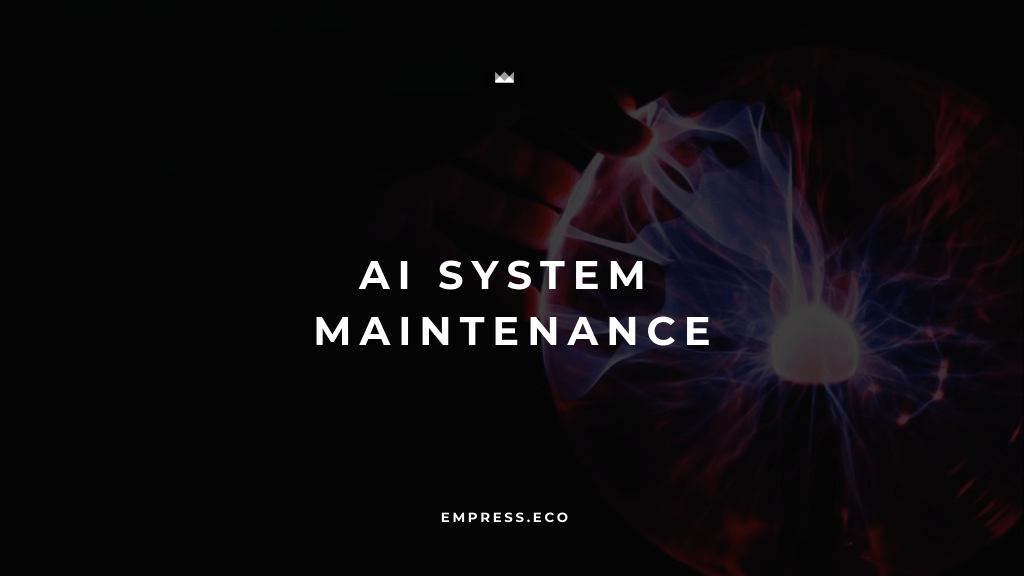The ability to make quick, informed decisions is more critical than ever. Whether it's adjusting to shifting market trends, responding to customer demands, or optimizing internal processes, the speed at which you can act can often determine your success. This is where real-time data insights come into play.
Real-time data insights provide businesses with the ability to analyze and interpret data as it’s generated, offering a clear, up-to-the-minute view of what's happening in your operations, with your customers, or across the market. These insights are not just about reacting faster—they’re about making better, data-driven decisions that keep your business agile and competitive. In this comprehensive guide, we'll explore the immense value of real-time data insights, the strategies to effectively implement them, and how they can be leveraged to drive success.
The Strategic Importance of Real-Time Data Insights
Imagine being able to adjust your marketing strategy the moment consumer preferences shift, or streamline your supply chain operations as soon as a bottleneck arises. Real-time data insights allow businesses to act on information immediately, turning data into actionable intelligence in the blink of an eye. This capability transforms the way decisions are made, moving from reactive to proactive, and from static to dynamic.
Key Benefits of Real-Time Data Insights
1. Immediate Decision-Making
The most obvious advantage of real-time data insights is the ability to make decisions quickly and effectively. In a world where market conditions can change rapidly, having access to the latest data allows you to respond immediately rather than waiting for end-of-day reports or weekly summaries.
For example, if a retail chain notices a sudden spike in sales of a particular product due to a viral social media trend, real-time data can alert management to reorder stock, adjust pricing, or increase marketing efforts instantly. This agility prevents missed opportunities and maximizes revenue potential by keeping the business in sync with market dynamics.
2. Enhanced Operational Efficiency
Operational efficiency is a cornerstone of business success. By monitoring processes in real time, companies can identify and resolve inefficiencies as they occur, rather than after the fact. This not only reduces waste and downtime but also ensures that resources are being used as effectively as possible.
Take manufacturing as an example. With real-time data, a manufacturing plant can track equipment performance and detect any deviations from optimal operation. If a machine starts to perform below expected standards, an alert can be triggered, allowing maintenance teams to intervene before the issue escalates into a costly breakdown. This level of proactive management helps maintain continuous production and reduces operational costs.
3. Improved Customer Experience
Understanding your customers’ behavior and preferences in real time allows for a level of personalization and service that can significantly enhance customer satisfaction and loyalty. Real-time data can be used to tailor offers, adjust service levels, or even predict and prevent issues before they affect the customer.
Consider an online retailer that uses real-time data to monitor customer interactions on their website. If a customer repeatedly hovers over a particular product without making a purchase, the system can trigger a personalized offer, such as a discount or a reminder email, to encourage conversion. This type of immediate response not only increases sales but also makes the customer feel valued and understood.
4. Increased Agility and Responsiveness
In an increasingly competitive market, the ability to adapt quickly to changes is a significant advantage. Real-time data insights provide the agility needed to respond to shifts in consumer demand, emerging market trends, or internal operational challenges.
For instance, a logistics company might use real-time data to track delivery vehicles and monitor traffic conditions. If an unexpected traffic jam occurs, the system can suggest alternative routes or adjust delivery schedules on the fly, ensuring timely deliveries and maintaining customer satisfaction.
Implementing Effective Real-Time Data Insights
To fully leverage the power of real-time data, businesses need to adopt a strategic approach to implementation. It’s not just about having access to data, but about integrating it into your decision-making processes in a way that drives real value.
1. Invest in Real-Time Analytics Tools
The foundation of real-time data insights is robust analytics tools that can process and analyze data as it’s generated. These tools should be capable of handling large volumes of data and providing actionable insights with minimal latency.
For example, tools like Apache Kafka and Spark Streaming are designed to process streaming data in real time, making them ideal for environments where speed and scale are critical. These tools can be integrated with business intelligence platforms to deliver insights directly to decision-makers in a format that is easy to understand and act upon.
When selecting analytics tools, consider factors such as scalability, ease of integration with existing systems, and the ability to handle the specific types of data your business generates. The right tools will empower your team to make informed decisions quickly and confidently.
2. Integrate Data Sources
For real-time data insights to be truly effective, they must draw from a comprehensive range of data sources. This means integrating data from various systems—such as IoT devices, social media, CRM platforms, and transactional databases—into a centralized platform.
Integration ensures that decision-makers have access to a holistic view of the business, rather than siloed data that only tells part of the story. For instance, a retail business might integrate sales data with social media analytics and customer feedback to gain a complete picture of consumer behavior and market trends in real time.
This level of integration requires a well-architected data infrastructure, often involving data lakes or warehouses that can aggregate and normalize data from different sources. The goal is to create a seamless flow of information that supports real-time analysis and decision-making.
3. Focus on Key Performance Indicators (KPIs)
With real-time data, it’s easy to become overwhelmed by the sheer volume of information available. To avoid this, businesses should focus on tracking and analyzing key performance indicators (KPIs) that are most critical to their success.
KPIs are specific metrics that reflect the performance and health of a business. By identifying the most relevant KPIs for your organization—such as sales conversion rates, customer satisfaction scores, or operational efficiency metrics—you can ensure that your real-time data efforts are aligned with your strategic goals.
For example, an e-commerce company might track real-time metrics like cart abandonment rates, website load times, and customer service response times. By monitoring these KPIs, the company can quickly identify issues and take corrective action before they impact the customer experience.
4. Automate Alerts and Notifications
One of the most powerful features of real-time data insights is the ability to set up automated alerts and notifications. These alerts can be configured to trigger when specific thresholds or anomalies are detected, ensuring that decision-makers are immediately informed of significant changes.
For instance, a financial services company might set up alerts for unusual transaction patterns that could indicate fraud. If the system detects an anomaly, it can automatically notify the risk management team, allowing them to investigate and respond in real time.
Automation not only speeds up response times but also reduces the risk of human error. By ensuring that critical information is acted upon promptly, businesses can mitigate risks and capitalize on opportunities as they arise.
5. Foster a Data-Driven Culture
The success of real-time data insights depends not just on the technology, but on the people who use it. To truly leverage the power of real-time data, businesses must foster a culture that values data-driven decision-making.
This means providing employees with the training and tools they need to effectively interpret and act on real-time data. It also means encouraging a mindset where decisions are based on data rather than intuition or tradition.
For example, regular workshops and training sessions can help employees at all levels understand how to use real-time analytics tools and interpret the insights they generate. By embedding data-driven practices into the organization’s culture, businesses can ensure that real-time data insights are effectively utilized to drive success.
Challenges and Considerations
While real-time data insights offer significant benefits, there are also challenges that businesses must navigate to successfully implement this capability.
1. Data Quality and Accuracy
The value of real-time data insights is only as good as the data itself. Ensuring that data is accurate, consistent, and reliable is crucial for making sound decisions. Poor data quality can lead to incorrect insights and misguided actions.
To maintain data quality, businesses should implement processes for data validation, cleaning, and regular auditing. This might involve setting up automated checks to detect and correct errors in real time, or establishing protocols for manual review and correction.
For example, a healthcare provider relying on real-time data to monitor patient health must ensure that the data from sensors and monitoring devices is accurate and free from errors. Inaccurate data could lead to incorrect diagnoses or treatment plans, with potentially serious consequences.
2. Infrastructure and Scalability
Real-time data processing requires robust infrastructure capable of handling large volumes of data and delivering insights with minimal delay. As businesses grow and their data needs increase, scalability becomes a critical consideration.
Investing in cloud-based solutions can offer the scalability needed to support real-time data processing without the need for significant upfront infrastructure costs. Cloud platforms like AWS, Google Cloud, and Microsoft Azure provide scalable computing resources that can be adjusted as data volumes grow.
Additionally, businesses should consider using distributed computing frameworks, such as Hadoop or Apache Spark, which are designed to process large data sets across multiple machines, ensuring that real-time insights can be generated even as data volumes increase.
3. Data Privacy and Security
With real-time data comes the responsibility of ensuring that sensitive information is protected from unauthorized access and breaches. Data privacy and security are paramount, especially when dealing with personal or financial information.
Businesses must implement robust security measures, such as encryption, access controls, and regular security audits, to protect real-time data. Compliance with data privacy regulations, such as GDPR or CCPA, is also essential to avoid legal repercussions and maintain customer trust.
For instance, a financial institution processing real-time transaction data must ensure that this data is encrypted both in transit and at rest, and that only authorized personnel have access to it. Failure to do so could result in data breaches, financial loss, and damage to the institution's reputation.
Conclusion
Real-time data insights are a game-changer for businesses looking to make quick, informed decisions and maintain a competitive edge. By leveraging immediate data analysis, companies can optimize operations, improve customer experiences, and respond swiftly to changes in the market.
However, the successful implementation of real-time data insights requires more than just the right technology—it also involves careful planning, a focus on data quality, and a commitment to fostering a data-driven culture. By addressing these challenges and investing in the necessary infrastructure and expertise, businesses can fully harness the power of real-time data and achieve long-term success.
As the pace of business continues to accelerate, real-time data insights will become increasingly essential for staying ahead of the competition and driving growth in a rapidly changing world.



